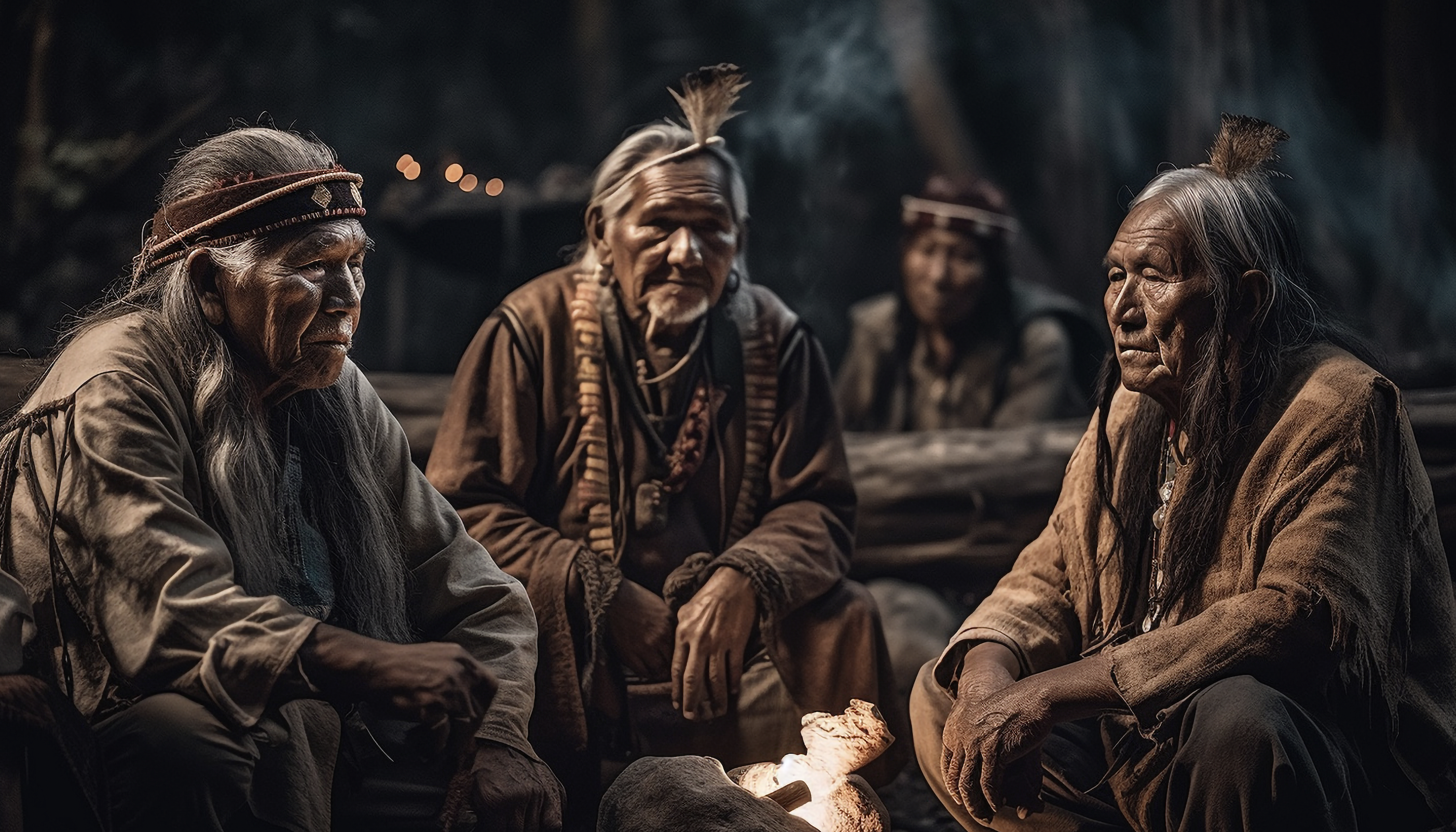Canada’s Indigenous peoples have an enduring history deeply intertwined with the land, its resources, and cultural traditions. Among the various aspects that reflect their rich heritage, sourdough bread stands as a culinary testament passed down through generations. This remarkable culinary practice not only showcases their resourcefulness but also encapsulates the profound connection between Indigenous communities and their environment.
Ancient Origins: For thousands of years, the First Nations and Indigenous peoples of Canada have relied on sourdough bread as a staple in their diets. The art of fermenting wild yeasts and naturally occurring bacteria has been practiced by these communities long before the arrival of European settlers and well before ancient Egyptians even tried it.
Cultural Significance: Sourdough bread holds deep cultural significance within Indigenous communities, symbolizing sustenance, resilience, and communal bonds. The bread-making process itself fosters a sense of togetherness, often involving entire families or communities coming together to share their knowledge and skills.
Resourcefulness and Connection to Nature: Indigenous peoples’ use of sourdough bread underscores their profound connection to the natural world. In traditional sourdough recipes, wild yeasts are captured from the environment, transforming grains into leavened bread. This practice showcases their resourcefulness and reliance on local resources, as well as their intimate understanding of the land and its microbial diversity.
Harvest Cycles and Seasonal Variation: The Indigenous approach to sourdough breadmaking is closely aligned with the cycles of the land. They adapt their recipes to reflect seasonal variations in available ingredients, such as utilizing wild berries or herbs during certain times of the year. This adaptation and utilization of seasonal produce demonstrate their respect for the environment and sustainable practices.
Sharing Traditions and Passing on Knowledge: The preparation of sourdough bread holds a special place in Indigenous cultures, often serving as a platform for intergenerational knowledge transfer. Elders, who hold a wealth of culinary wisdom, pass down their sourdough techniques to younger members of the community. This sharing of traditions not only preserves cultural heritage but also fosters a sense of identity and belonging among Indigenous youth.
Ritual and Ceremonial Practices: Sourdough bread is also linked to various ceremonial practices within Indigenous cultures. It may be offered as a sacred gift during ceremonies, feasts, or important life events. The act of sharing sourdough bread becomes a symbolic gesture, reinforcing social bonds and acknowledging the sacredness of nourishment.
Adaptation and Contemporary Relevance: Today, Indigenous communities continue to celebrate their heritage and adapt traditional sourdough breadmaking practices to the modern world. While some communities maintain their time-honored techniques, others incorporate new ingredients or innovative methods, reflecting their resilience and ability to embrace change while preserving cultural roots.
The story of sourdough bread within Canada’s Indigenous communities is a testament to the enduring legacy of cultural practices that have sustained them for millennia. This remarkable culinary tradition not only nourishes the body but also feeds the spirit, weaving a tapestry of resilience, connection to nature, and ancestral heritage. From its ancient origins rooted in the land to the intergenerational transmission of knowledge, sourdough bread serves as a tangible link to the past and a source of cultural pride for Indigenous peoples.
By recognizing and appreciating the significance of sourdough bread in Indigenous cultures, we pay homage to their enduring contributions to Canada’s rich cultural tapestry. It is a reminder that Indigenous traditions are not relics of the past but living, breathing expressions of identity and resilience. As we embrace the story of sourdough bread, we deepen our understanding of the deep-rooted connections Indigenous communities have with their lands, the cycles of nature, and the wisdom passed down through generations.
Furthermore, the preservation and celebration of this remarkable tradition foster respect, appreciation, and dialogue between diverse cultures in Canada. It is an invitation to engage in meaningful exchanges, learn from Indigenous perspectives, and forge a path towards a more inclusive and harmonious society.
Let us savor the flavors, textures, and stories embodied in each sourdough loaf, recognizing that behind every bite lies a narrative of strength, survival, and cultural heritage. As we break bread together, we honor and celebrate the profound contributions of Canada’s Indigenous peoples, ensuring that their ancestral legacy continues to thrive for generations to come.
Some of the Main First Nations Indigenous Bands in Canada
Given there are over 600 distinct different bands, we condensed things to this list below for a high-level overview.
British Columbia:
- Squamish Nation
- Haida Nation
- Musqueam Indian Band
- Tsleil-Waututh Nation
- Tsimshian Nation
- Nuu-chah-nulth Nation
- Sto:lo Nation
- Okanagan Nation
- Kwakiutl Nation
Alberta:
- Blood Tribe (Kainai Nation)
- Piikani Nation
- Siksika Nation
- Tsuut’ina Nation
- Stoney Nakoda Nation
- Beaver Lake Cree Nation
- Fort McKay First Nation
Saskatchewan:
- Cree Nations such as James Smith Cree Nation and Lac La Ronge Indian Band
- Dakota Nations such as Whitecap Dakota First Nation
- Saulteaux First Nation
- Onion Lake Cree Nation
- Poundmaker Cree Nation
Manitoba:
- Ojibway Nations such as Sandy Bay First Nation
- Cree Nations such as Norway House Cree Nation
- Peguis First Nation
- Fisher River Cree Nation
Ontario:
- Anishinaabe Nations such as Chippewas of Rama First Nation, Mississaugas of the Credit First Nation
- Haudenosaunee (Iroquois) Nations such as Six Nations of the Grand River
- Ojibway Nations such as the Saugeen First Nation
- Nipissing First Nation
- Moose Cree First Nation
Quebec:
- Mohawk Nation at Kahnawake
- Atikamekw of Manawan
- Innu Nations such as the Innu Takuaikan Uashat Mak Mani-Utenam
- Cree Nation of Eeyou Istchee
- Algonquin Anishinabeg Nation Tribal Council
New Brunswick:
- Mi’kmaq Nations such as Eel River Bar First Nation
- Maliseet Nation such as Tobique First Nation
Prince Edward Island:
- Mi’kmaq Nations such as Abegweit First Nation and Lennox Island First Nation
Nova Scotia:
- Mi’kmaq Nations such as Membertou First Nation and Millbrook First Nation
Newfoundland and Labrador:
- Mi’kmaq Nations such as Miawpukek First Nation
- Innu Nation
- Nunatsiavut
Yukon:
- Kwanlin Dün First Nation
- Tr’ondëk Hwëch’in
- Champagne and Aishihik First Nations
Northwest Territories:
- Tłı̨chǫ Nation
- Dene Nations such as Dehcho First Nations
- Inuvialuit
Nunavut:
- Inuit groups represented by the Nunavut Tunngavik





















